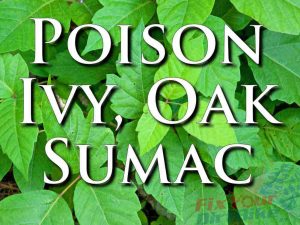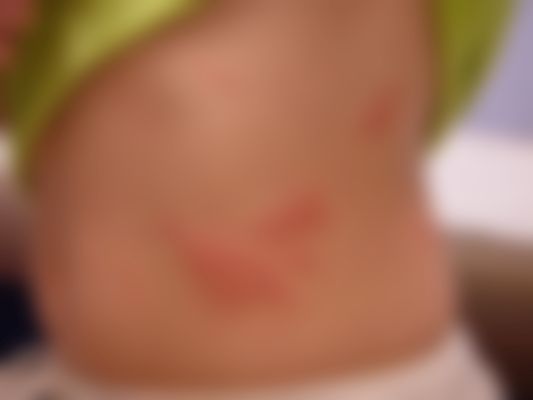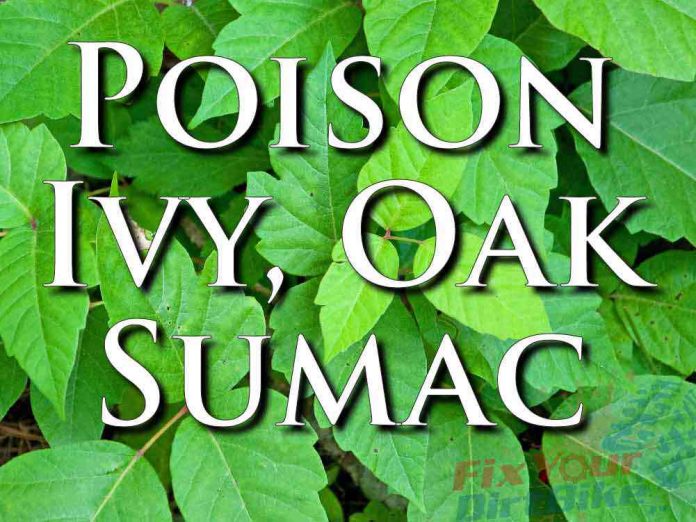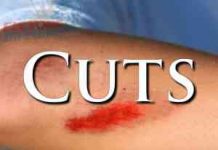Treatment For Poison Ivy, Oak, & Sumac With Basic First Aid
Do you know what poison ivy is? How about poison oak? Poison sumac? Have you ever had an unusually intense itch? Of course, you have, don’t lie. Think about how crazy it drove you, and how you wanted nothing more than to make it stop. Remember how awesome it felt to scratch that itch and finally get relief?
 Now, imagine getting that same itch, multiplying its intensity by ten, and having to deal with it for two straight weeks with only the tiniest bit of relief. If you can imagine that, then you’ll have a good sense of how poison ivy, poison oak, and poison sumac work.
Now, imagine getting that same itch, multiplying its intensity by ten, and having to deal with it for two straight weeks with only the tiniest bit of relief. If you can imagine that, then you’ll have a good sense of how poison ivy, poison oak, and poison sumac work.
If you’ve ever had the misfortune of getting into one of these nasty plants, then you already know the misery that follows your body’s allergic reaction. Worse yet is when you get it while you’re on a long ride or while on a camping trip. Here’s how you can make the best out of the situation using basic first aid.
What Is Poison Ivy, Oak, & Sumac?
All three are plants that produce the toxic oil called urushiol (oo–roo-shee-awl, -ol) as a means of protection from potential predators. When these toxins come into direct contact with your skin, they can cause severe itching, rashes, and blisters.
What Does Poison Ivy Look Like?
Poison ivy is a vine-like plant that has a red stem with three leaves. Poison Ivy is located throughout most of the lower 48 and is often found along rivers and other damp, wooded areas.

What Does Poison Oak Look Like
Poison Oak is a shrub-like plant that also has three leaves. Poison oak is located in the western part of the United States and is found mostly in forests and woodlands.

What Does Poison Sumac Look Like?
Poison Sumac is a woody shrub that can have up to 13 leaves arranged in pairs. Poison sumac is very prominent up and down the Mississippi River.

What Does The Rash Look Like?
- In most instances, a skin rash will appear, and the itching will be fairly intense. This is the most common symptom of poison ivy oak, and sumac, and is usually the clearest indicator that you’ve come into contact with one of them.
- A red, bumpy rash will most likely form on the affected area(s). The rash will vary in size depending on the amount of exposure to the toxin.
- Blisters. Some bumps in the rash will eventually form blisters that will burst and leak fluid.



Related: Black eyes look harmless but pay attention, the damage may be more than skin deep!
How To Treat Poison Ivy
There’s no treatment for shortening the time of the poison ivy infection. It will have to run its course, which typically takes one to two weeks for the symptoms of poison ivy to completely disappear. But while you can’t speed up recovery, there are steps you can take to prevent the spreading of the toxin and help alleviate some of the symptoms.
There are two different categories of first aid treatment: Immediate (as soon as you discover the first symptom) and Later (once you’re back home).
Immediate Treatment For Poison Ivy
- Wash the infected area with soap and water as soon as possible. The oil from poison ivy will remain on the surface of whatever it touches and can be spread to other parts of the body or other people. That’s why it’s very important that you at least wash the infected area as soon as possible. An even safer step is to wash your entire body.
- Wash your clothing. Poison ivy oil can also spread via any clothing it touches. If possible, wash your clothes, also. If it’s not possible at the moment, then prevent contact with your clothes as much as possible.
- Stay cool and dry. Sweating and increased body heat can further intensify the itching. It’s best to not exert yourself too much when first infected.
Related: Treating Cuts And Scrapes From Riding And Crashing
Later Treatment For Poison Ivy
- Wash your contaminated clothing. If you haven’t already, wash any clothes that may have contacted the plant, including boots, gloves, etc.
- Avoid topical creams. Creams such as antihistamines and antibiotics can make the skin more sensitive and thus more susceptible to prolonged itching.
- Apply calamine lotion. Instead of creams, use calamine lotion to help ease the itching and soothe the rash. Apply it daily at regular intervals throughout the entire duration of the infection.
- Seek medical assistance, if needed. Some people have severe reactions to poison ivy, oak, or sumac. If the itch is too intense, or you have trouble sleeping, then get medical attention as soon as possible.
When you go down in the woods, you’re going to be more concerned about your bike, then your gear, then if anybody saw you. Make sure to take a second look at whatever you just went down in. If it’s Poison Ivy, Oak, or Sumac, make sure you get your gear washed off immediately to avoid accidental contact.
If you have any questions or anything to add, please leave them in the comments or on our FaceBook page!
Keep Reading – Common Bug Bites and Stings





